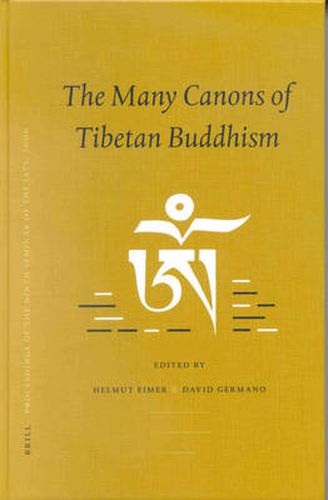Readings Newsletter
Become a Readings Member to make your shopping experience even easier.
Sign in or sign up for free!
You’re not far away from qualifying for FREE standard shipping within Australia
You’ve qualified for FREE standard shipping within Australia
The cart is loading…






This study explores both the mainstream Tibetan canons of translated Buddhist classics (known as the Bka’ ‘gyur and Bstan 'gyur), and the alternative canons of literature of the Nyingma sectarian traditions (known as the Rnying ma rgyud 'bum). The first section discusses the formation and transmission of Tibetan canonical texts, but also includes important works of reference, such as a Bka’ gdams pa handbook and several unique catalogues. It also features a report on Tibetan textual transmission in Mongolia. The second section not only presents interpretative analysis of one of the most important alternative canons in Tibet, the Rnying ma rgyud ‘bum, but also discusses essential issues of legitimacy, authority and lineage during the grey periods of the 10th to 12th centuries which laid the foundation for the formation of all ensuing Tibetan canons. The volume thus seeks to develop fresh perspectives on the nature, plurality and contents of canons in Tibetan Buddhism.
$9.00 standard shipping within Australia
FREE standard shipping within Australia for orders over $100.00
Express & International shipping calculated at checkout
This study explores both the mainstream Tibetan canons of translated Buddhist classics (known as the Bka’ ‘gyur and Bstan 'gyur), and the alternative canons of literature of the Nyingma sectarian traditions (known as the Rnying ma rgyud 'bum). The first section discusses the formation and transmission of Tibetan canonical texts, but also includes important works of reference, such as a Bka’ gdams pa handbook and several unique catalogues. It also features a report on Tibetan textual transmission in Mongolia. The second section not only presents interpretative analysis of one of the most important alternative canons in Tibet, the Rnying ma rgyud ‘bum, but also discusses essential issues of legitimacy, authority and lineage during the grey periods of the 10th to 12th centuries which laid the foundation for the formation of all ensuing Tibetan canons. The volume thus seeks to develop fresh perspectives on the nature, plurality and contents of canons in Tibetan Buddhism.